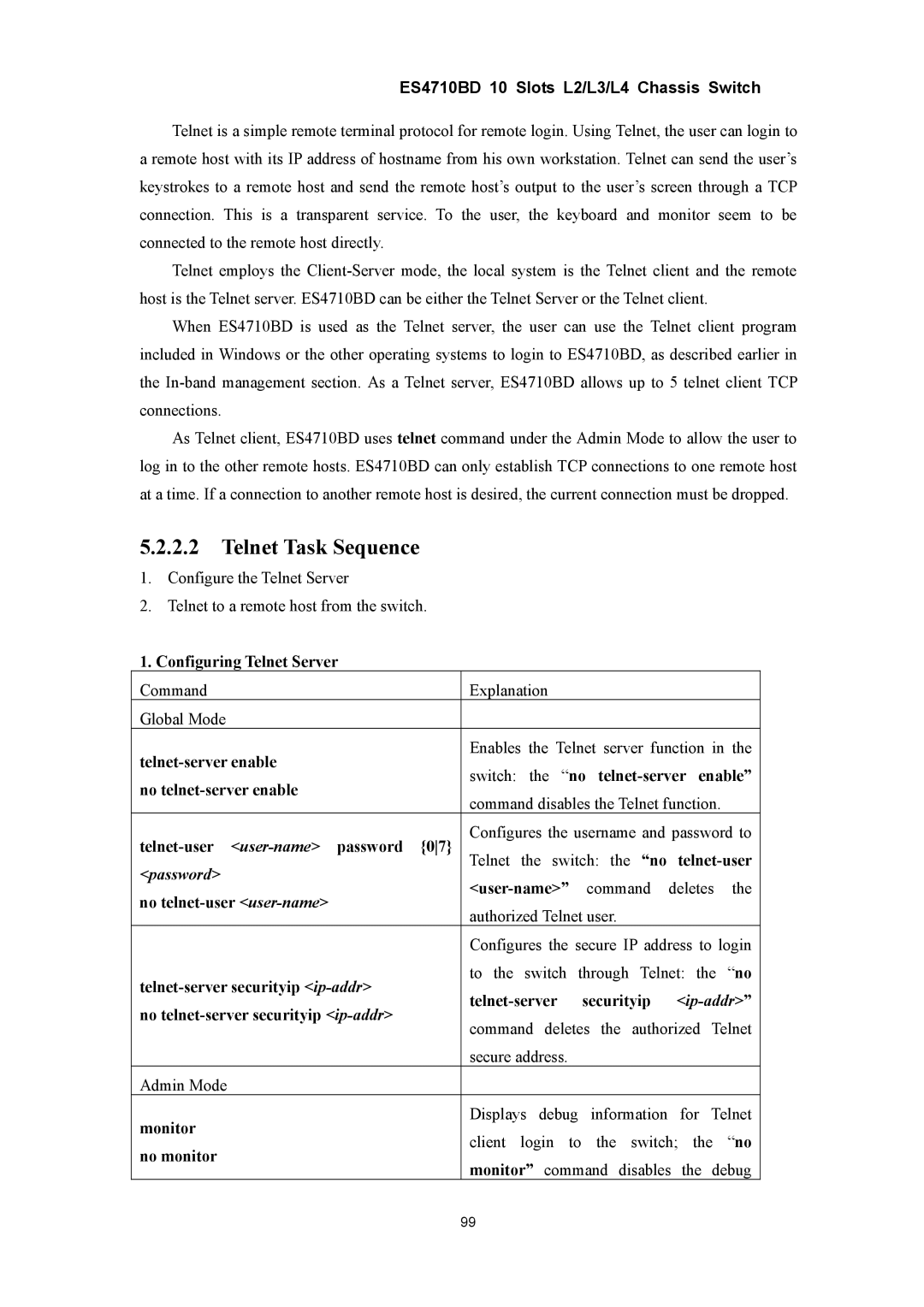ES4710BD 10 Slots L2/L3/L4 Chassis Switch
Telnet is a simple remote terminal protocol for remote login. Using Telnet, the user can login to a remote host with its IP address of hostname from his own workstation. Telnet can send the user’s keystrokes to a remote host and send the remote host’s output to the user’s screen through a TCP connection. This is a transparent service. To the user, the keyboard and monitor seem to be connected to the remote host directly.
Telnet employs the
When ES4710BD is used as the Telnet server, the user can use the Telnet client program included in Windows or the other operating systems to login to ES4710BD, as described earlier in the
As Telnet client, ES4710BD uses telnet command under the Admin Mode to allow the user to log in to the other remote hosts. ES4710BD can only establish TCP connections to one remote host at a time. If a connection to another remote host is desired, the current connection must be dropped.
5.2.2.2Telnet Task Sequence
1.Configure the Telnet Server
2.Telnet to a remote host from the switch.
1. Configuring Telnet Server
Command |
| Explanation |
|
|
|
|
| |
Global Mode |
|
|
|
|
|
|
|
|
| Enables the Telnet server function in the | |||||||
| switch: | the “no | ||||||
no |
| |||||||
| command disables the Telnet function. |
| ||||||
|
|
| ||||||
| Configures the username and password to | |||||||
| Telnet | the switch: the | “no | |||||
<password> |
|
| command | deletes | the | |||
no |
|
| ||||||
| authorized Telnet user. |
|
|
| ||||
|
|
|
|
| ||||
|
| Configures the secure IP address to login | ||||||
| to the | switch | through Telnet: the “no | |||||
|
| securityip |
| |||||
no |
|
| ||||||
| command deletes the authorized Telnet | |||||||
|
| |||||||
|
| secure address. |
|
|
|
|
| |
Admin Mode |
|
|
|
|
|
|
|
|
monitor |
| Displays debug information for Telnet | ||||||
| client | login | to | the | switch; the | “no | ||
no monitor |
| |||||||
| monitor” command disables the debug | |||||||
|
| |||||||
| 99 |
|
|
|
|
|
| |
